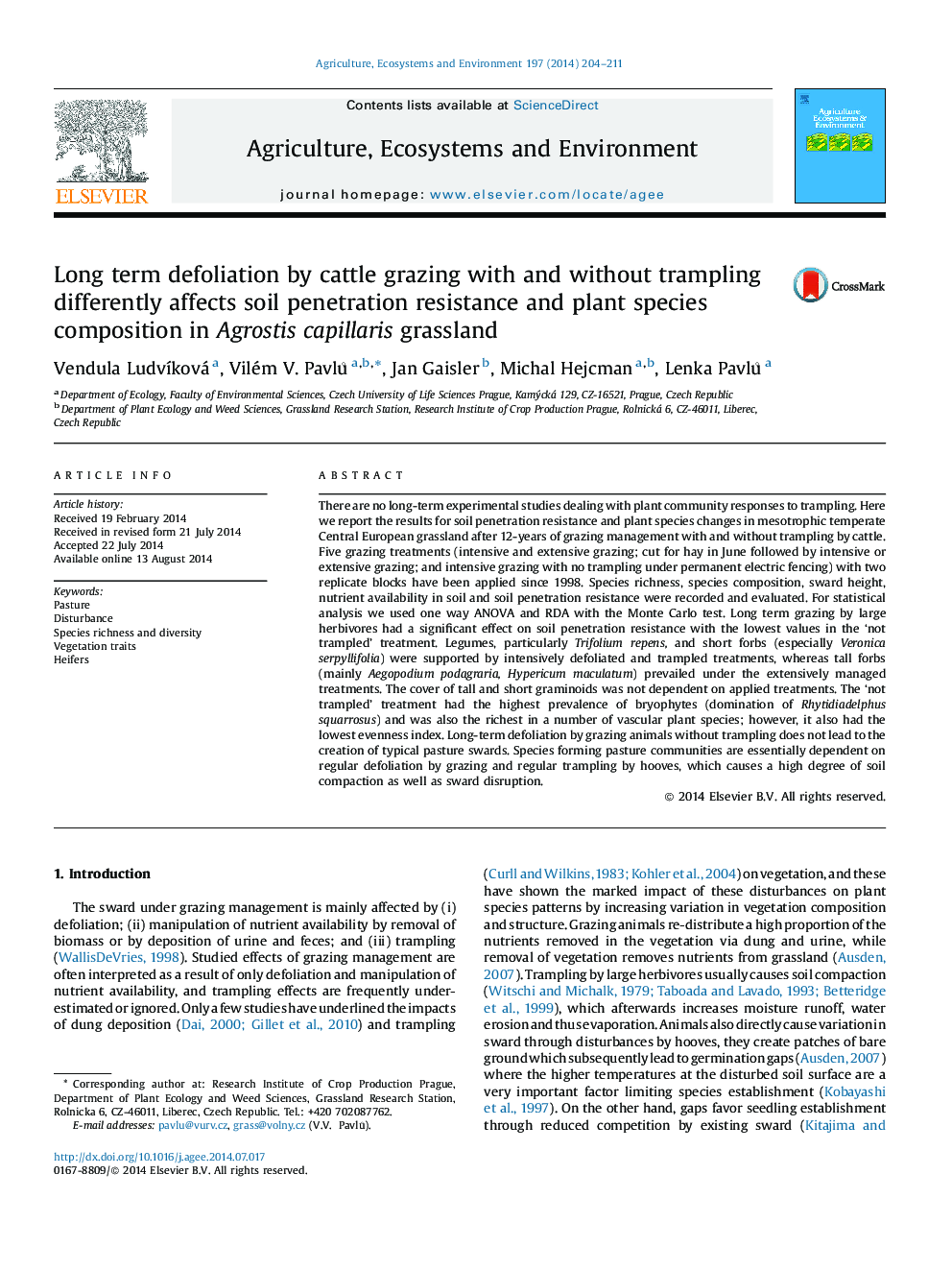| کد مقاله | کد نشریه | سال انتشار | مقاله انگلیسی | نسخه تمام متن |
|---|---|---|---|---|
| 2413822 | 1552055 | 2014 | 8 صفحه PDF | دانلود رایگان |

• We tested impact of a long-term grazing management with and without trampling.
• Trampling of heifers affects soil compaction and floristic composition.
• Bryophytes prevailed in no trampled treatment.
• Defoliation by grazing with trampling are essential for typical pasture community.
There are no long-term experimental studies dealing with plant community responses to trampling. Here we report the results for soil penetration resistance and plant species changes in mesotrophic temperate Central European grassland after 12-years of grazing management with and without trampling by cattle. Five grazing treatments (intensive and extensive grazing; cut for hay in June followed by intensive or extensive grazing; and intensive grazing with no trampling under permanent electric fencing) with two replicate blocks have been applied since 1998. Species richness, species composition, sward height, nutrient availability in soil and soil penetration resistance were recorded and evaluated. For statistical analysis we used one way ANOVA and RDA with the Monte Carlo test. Long term grazing by large herbivores had a significant effect on soil penetration resistance with the lowest values in the ‘not trampled’ treatment. Legumes, particularly Trifolium repens, and short forbs (especially Veronica serpyllifolia) were supported by intensively defoliated and trampled treatments, whereas tall forbs (mainly Aegopodium podagraria, Hypericum maculatum) prevailed under the extensively managed treatments. The cover of tall and short graminoids was not dependent on applied treatments. The ‘not trampled’ treatment had the highest prevalence of bryophytes (domination of Rhytidiadelphus squarrosus) and was also the richest in a number of vascular plant species; however, it also had the lowest evenness index. Long-term defoliation by grazing animals without trampling does not lead to the creation of typical pasture swards. Species forming pasture communities are essentially dependent on regular defoliation by grazing and regular trampling by hooves, which causes a high degree of soil compaction as well as sward disruption.
Journal: Agriculture, Ecosystems & Environment - Volume 197, 1 December 2014, Pages 204–211